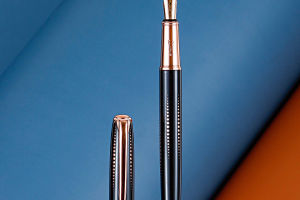Vitamin C is a common ingredient in cosmetics, but some rumors using vitamin C-containing cosmetics during the day not only does not whiten the skin but also darkens it;
some people are also concerned that using skincare products containing both vitamin C and niacinamide may cause allergies, and long-term use of vitamin C-containing cosmetics may thin the skin. These are all misunderstandings about cosmetics containing vitamin C.
Misconception One:
Using it during the day will darken the skin
Vitamin C, also known as L-ascorbic acid, is a natural antioxidant that can be used to treat and prevent skin sunburn. In cosmetics, Vitamin C can interact with the copper ions at the active site of tyrosinase, slowing down the synthesis process of melanin such as dopaquinone, thereby interfering with melanin production and achieving spot-removing effects.
Melanin is the "number one enemy" of spot-removing. Melanin is a biopolymer synthesized by melanocytes, which are found in almost all tissues of the body. The number of melanocytes is unrelated to skin color, race, or gender, only related to location and age. Melanin and other pigments such as carotene in the skin affect skin color, among which the quantity and distribution of melanin are the main determining factors of skin color.
The formation of melanin is related to oxidation reactions. Vitamin C, as a common antioxidant, can inhibit oxidation reactions, enhance skin repair and regeneration capabilities, delay aging, and also reduce the damage of ultraviolet rays to the skin.
Compared with other ingredients, vitamin C is cheaper and more widely available, so it is widely used in anti-aging cosmetics. However, Vitamin C is unstable and easily oxidized in the air, losing its antioxidant activity, and ultraviolet rays accelerate this oxidation process, so it is recommended to use vitamin C-containing cosmetics at night or avoid light. Although using vitamin C-containing cosmetics during the day may not achieve the best results, it will not darken the skin.
Misconception Two:
Using it together with niacinamide-containing cosmetics may cause allergies
Niacinamide has been a "star ingredient" in the field of anti-aging cosmetics in recent years. Niacinamide is a derivative of vitamin B3 and is also a recognized anti-aging ingredient in the field of cosmetic dermatology, reducing and preventing skin dullness and yellowing in the early stages of aging.
The mechanism of niacinamide can be summarized in three aspects: first, it inhibits the formation of melanin particles; second, it inhibits the transfer of melanin to keratinocytes; third, it accelerates the transfer of melanin in keratinocytes to the stratum corneum and promotes the shedding of the stratum corneum.
Some people believe that because niacinamide hydrolyzes into nicotinic acid, and nicotinic acid has some irritancy to the skin, it is easy to cause skin redness, sensitivity, and damage to the skin barrier, so cosmetics containing niacinamide cannot be used together with vitamin C-containing cosmetics. Niacinamide hydrolysis occurs in an environment with a pH value of less than 6, which cannot be satisfied in daily life, so there is no need to worry.
Misconception Three:
Long-term use may thin the skin
What we often refer to as "skin thinning" is the thinning of the stratum corneum. The essential reason for the thinning of the stratum corneum is the damage to the basal layer cells, which cannot undergo normal division and reproduction, disrupting the original metabolic cycle.
Suppose the four layers of cells from the basal layer upwards are affected. In that case, the manifestation on the surface of the skin is the thinning of the stratum corneum, and the position of the capillaries becomes shallower, eventually forming telangiectasia.
Although vitamin C is acidic, the concentration of vitamin C in cosmetics is not enough to harm the skin. Vitamin C does not thin the stratum corneum, but individuals with thinner stratum corneum are usually more sensitive, so when using products containing vitamin C, it is advisable to first test on areas such as behind the ears to check for allergies.


